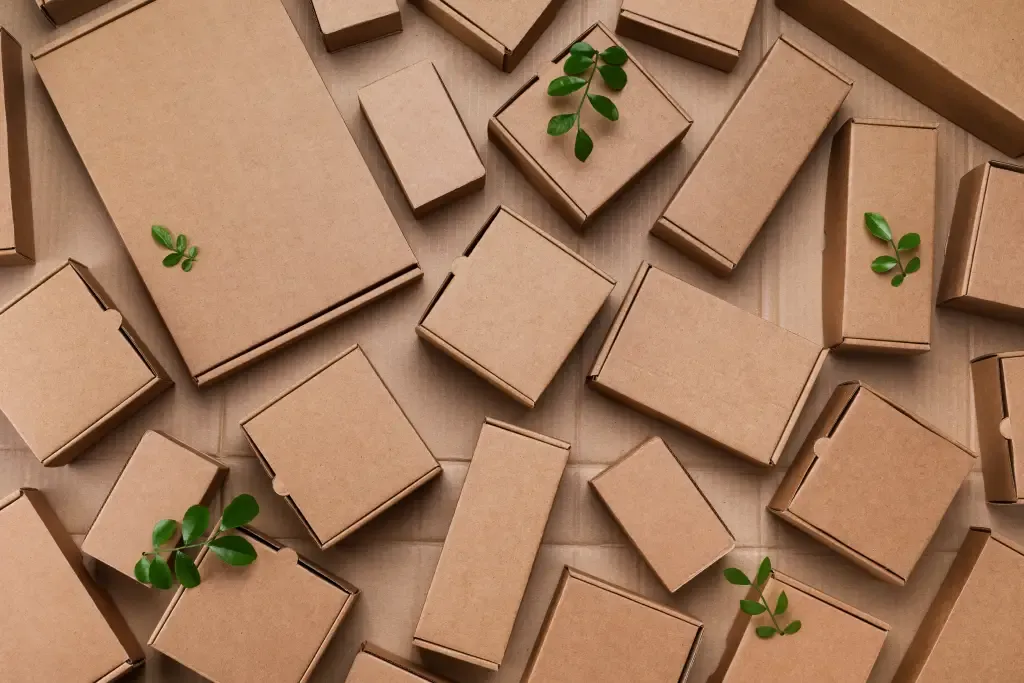Discover how sustainable packaging for small businesses can boost your eco-credentials, reduce waste, and save costs. Learn practical tips for going green! Sustainable packaging for small businesses is not just a trend—it’s a movement that’s reshaping the way products are packaged, shipped, and consumed worldwide. As environmental concerns take center stage, businesses of all sizes are looking for ways to minimize their ecological footprint. For small businesses, adopting sustainable packaging practices can be a powerful way to contribute to a greener planet while standing out in a competitive market. But what does sustainable packaging actually mean for small businesses, and how can it be incorporated into your operations? In this guide, we’ll explore the ins and outs of sustainable packaging for small businesses. Whether you’re just starting out or looking to revamp your packaging strategy, this article will give you all the tools and insights needed to take your business to the next level—without harming the planet. So, why should small businesses make the switch to sustainable packaging? It’s not just about saving the environment; it’s about building a brand that aligns with the values of today’s conscious consumers. But how do you make this change, and what sustainable packaging options are available? Keep reading to discover creative, eco-friendly solutions that can make a significant difference to both your business and the planet. Sustainable Packaging for Small Businesses Sustainable packaging for small businesses isn’t just about the materials you choose—it’s about the entire packaging strategy, from the type of materials to the design, sourcing, and even the shipping process. Implementing sustainability in your packaging doesn’t need to be complicated or expensive, and the benefits are plentiful. Not only can it reduce your environmental impact, but it can also enhance your brand image, attract eco-conscious customers, and even save you money in the long run. Here are some key strategies small businesses can adopt to make their packaging more sustainable: 1. Use Recyclable or Compostable Materials One of the first steps in adopting sustainable packaging for small businesses is choosing recyclable or compostable materials. Traditional packaging often ends up in landfills, contributing to waste that can take centuries to decompose. By switching to recyclable materials, you can help reduce the amount of waste that ends up in landfills. Compostable materials are biodegradable and break down more quickly, making them an excellent choice for businesses focused on reducing their carbon footprint. Some options for recyclable and compostable materials include: Recycled paper – Ideal for wrapping, boxes, and fillers. Corrugated cardboard – A sustainable choice for shipping products. Compostable mailers – Perfect for lightweight, non-fragile items. Mushroom packaging – A biodegradable alternative to foam peanuts. Not only do these materials contribute to sustainability, but they also give your business a positive, eco-friendly image. Be sure to educate your customers on how to dispose of the packaging correctly, ensuring it reaches the appropriate recycling or composting facility. 2. Minimalist Design Sustainable packaging for small businesses doesn’t always have to mean a complete overhaul. Sometimes, a minimalist design can have a significant impact. By simplifying your packaging, you can reduce the amount of material used, which in turn reduces waste and lowers production costs. Minimalist design ideas include: Using less ink – Opt for simpler graphics or text to reduce the use of inks. Smaller packaging sizes – Minimize excess packaging by using just the right size for your product. Flat-packed designs – Packaging that is easy to store and transport reduces the carbon footprint of the shipping process. Not only does this cut down on materials, but it also appeals to consumers who value simplicity and sustainability. 3. Reusable Packaging Another fantastic way to embrace sustainable packaging for small businesses is by offering reusable packaging options. Instead of providing single-use packaging, consider packaging that customers can use repeatedly. This approach works particularly well for businesses that sell products like food, beauty products, or even home goods. Examples of reusable packaging include: Glass jars or bottles – Ideal for beauty or food products. Tote bags – A great alternative to paper or plastic bags. Fabric wraps – Used for wrapping items like gifts or clothing. Reusable packaging not only cuts down on waste but also creates a loyal customer base, as consumers appreciate the chance to repurpose packaging they’ve already received. 4. Sourcing Local Packaging When it comes to sustainable packaging for small businesses, sourcing packaging locally can have a major impact. By purchasing packaging from local suppliers, you’re reducing the environmental cost of transportation and supporting your local economy. Plus, local suppliers are often more in tune with the specific sustainability goals of your business and can offer more tailored options. Here’s why sourcing locally matters: Lower carbon footprint – Reduces the environmental impact of long-distance shipping. Support local businesses – Strengthens your local economy and fosters community relationships. Quick turnaround – Local suppliers can often provide faster service and customized packaging solutions. The closer you are to your packaging supplier, the smaller the environmental impact of getting those materials to your business. 5. Eco-Friendly Inks and Printing Another way to improve sustainable packaging for small businesses is by using eco-friendly inks and printing methods. Traditional inks often contain harmful chemicals that can be detrimental to both the environment and human health. Eco-friendly inks, such as soy-based or water-based inks, are a great alternative. Benefits of eco-friendly inks include: Less toxic – Safer for the environment and for employees working with them. Faster drying times – Reduces energy consumption during the printing process. Sustainably sourced – Often made from renewable resources. Opting for eco-friendly printing not only reduces waste but also strengthens your sustainability message to customers who care about eco-conscious practices. 6. Customizable Packaging As a small business, one of the most powerful tools you have is your ability to be creative and personal with your packaging. Customizable packaging allows you to design packaging that reflects your brand values while still being eco-friendly. By incorporating sustainable materials and design elements that are





